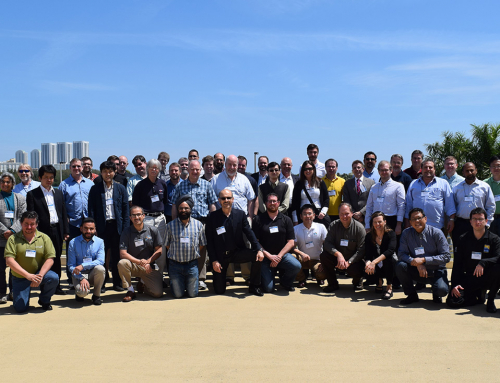Vitória, Brazil May 18-22, 2015
The Brazilian Symposium on Computer Networks and Distributed Systems (SBRC) is an annual event promoted by the Brazilian Computer Society (SBC) and the NationalLaboratory of Computer Networks (LARC). Over more than three decades of achievement, SBRC has become the most important national scientific event on computer networks and distributed systems in Brazil, and one of the busiest in the area of Computer Science. Every year, SBRC has attracted nearly 300 full-paper submissions, of which around 25% can be accepted. Over 700 attendees have joined the event yearly, with a large number of students working in the field.(for program click here)
WRNP“Innovation is useless, unless real problems for real people are resolved”. With this statement, the US network ESnet Chief Technology Officer Inder Monga marked the first day of the 16th WRNP, which was held this week, in Vitória. The event gathered the research community in Information and Communication Technologies (ICT).
Inder Monga was guided by the question “Why innovate?” and exposed how the traffic in the academic environment has evolved historically at a faster rate than the commercial Internet. He listed the characteristics of what must be the next network architecture. The redesign should stimulate greater interaction between the infrastructure and scientific applications.
The ESnet head proposed a new model for the improvement of the network flow and pointed as an alternative the Named Data Networking (NDN). It is a new type of architecture focused on content, which was indicated by its name and no longer by its physical location, defined by a network address. For the lecturer, the organizations that operate the academic networks need to “overcome software challenges”. Facing this, ESNet invests in a Software-Defined Networking (SDN) operationalization project, focusing on automation, analysis and assurance, aiming to offer operational support to this programmable platform.
Jeronomi Bezerra, from Florida International University, pointed SDN technology as the future of international academic collaboration. The Project Coordinator at AmLight, a network infrastructure comprised by four 10 Gb/s links between Miami, Brazil and Chile, stressed that SDN allows the network to be programmable at the virtualization layer. “The great advantage of these topologies is the mutual redundancy. If the network goes off on the SDN ring, the other MPLS ring takes over”, he commented.
For WRNP (Jeronimo Bezerra) presentation click here.
For WPEIF (Dr. Julio Ibarra and Jeronimo Bezerra) presentation click here.
Read RNP full article here.
For details from The Brazilian Symposium on Computer Networks and Distributed Systems (SBRC) click here.
**Photo credit RNP & SBRC



